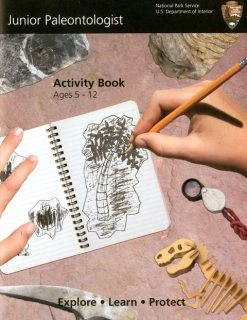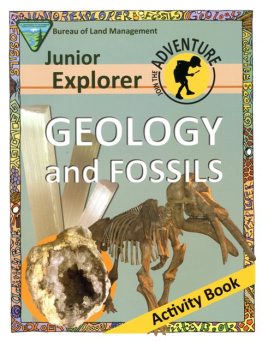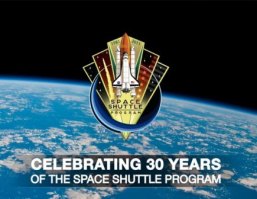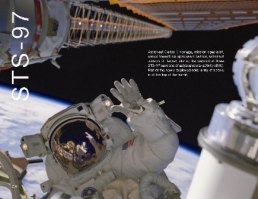 On Tuesday, we posted the first of a two-part interview about Wings in Orbit: Scientific and Engineering Legacies of the Space Shuttle, 1971-2010, a new book published by NASA to mark the ending of the U.S. Space Shuttle Program. Here’s Part 2 of that interview with Robert Crippen, the pilot of the Space Shuttle Columbia’s first orbital flight into space, Dr. Helen Lane, Editor-in Chief of Wings in Orbit, Wayne Hale, Executive Editor, and Dr. Kamlesh Lulla, Co-Editor.
On Tuesday, we posted the first of a two-part interview about Wings in Orbit: Scientific and Engineering Legacies of the Space Shuttle, 1971-2010, a new book published by NASA to mark the ending of the U.S. Space Shuttle Program. Here’s Part 2 of that interview with Robert Crippen, the pilot of the Space Shuttle Columbia’s first orbital flight into space, Dr. Helen Lane, Editor-in Chief of Wings in Orbit, Wayne Hale, Executive Editor, and Dr. Kamlesh Lulla, Co-Editor.
GovBookTalk: Wings in Orbit is beautifully illustrated. Do you have a favorite photograph or other image?
Bob Crippen: My favorite is the cover shot of the Orbiter in space.
Helen Lane: Every person involved with this book has a favorite, so there are at least 300 favorites, depending on who you asked. I was so involved with each graphic that it is impossible to decide. One of the privileges of working for NASA is the wonderful images and our graphic artists. We had two outstanding artists to provide these images.
However, I am partial to the first protein crystal, shown on page 433, and the flight of the 747 carrying the orbiter over the desert, page 109. The photos of preparing the Space Shuttle for flight at the Kennedy Space Center are fantastic, but because we had to reduce the size, we did not get the full benefit. All the photos and many of the graphics are available online through the Johnson Space Center or Kennedy Space Center.
Kamlesh Lulla: In my view, the Space Shuttle provided the scientific community with stunning views of our own home planet. It captured both the natural beauty and human drama: the book contains examples of both. My favorite image in the book is oil fires inKuwait, imaged by the Shuttle crew during a 1991 flight.
Wayne Hale: I particularly like the one of the Shuttle silhouetted against the sunrise colors of the atmosphere. But there are so many beautiful illustrations, it is hard to pick out just one.
GovBookTalk: From your perspective, how has the Shuttle program advanced space exploration and how will that be reflected in NASA’s future endeavors?
Bob Crippen: It has shown we can operate on a frequent basis of sending crews in space, but more important it has shown the broad range of tasks that humans can accomplish in space. That knowledge will be invaluable in planning our next major goal in human space flight.
Helen Lane: The focus of the book was the legacy of the Space Shuttle – what would it be remembered for in 10 years. So much as been made of its failures that we wanted to explore its accomplishments, unlike most of the popular writings. It is a complex story. However, I think there are several aspects that changed human space flight forever, and maybe international relationships.
The Orbiters can easily take six and sometimes more people into space. The Shuttle began when theU.S.was opening up technical jobs to women and minorities. The Space Shuttle provided the golden opportunity to expand the astronaut core to these folks, plus a wide variety of careers from physicist to astronomer to medical doctors. No other nation has done that. Now, it is totally accepted that anyone with the talents, health, and desire can go into space – see the commercial space programs.
The Space Shuttle era moved from the competition (Space Race) between countries to collaborations. As astronaut Mike Foale (p. 144) said, “When we look back 50 years to this time, we won’t remember the experiments that were performed, we won’t remember the assembly that was done. What we will know was the countries came together to do the first joint international project, and we will know that that was the seed that started us off to the moon and Mars.” There were many countries, including our former enemies,Russia and Japan, along with the Europeans involved in the space shuttle. We flew folks of many nationalities, religions, and cultures.
Many today say it is the Hubble. The Space Shuttle enabled the Hubble Space Telescope to perform well, leading to major discoveries. However, through our work with Hubble, we learned to do big construction and repair projects in space. The Space Shuttle taught us that the human is extremely capable of completing complex tasks in space. Now, it is accepted that we can do this, but 30 years ago most thought that it was only the dreams of the science fiction writers.
The human, plant, and animal research provides the bases for belief that humans can survive long space flights, probably leading to long-duration stays, including growing their own food. However, the research provided a warning too – from changes in space craft components, e.g. atomic oxygen, along with orbital debris and radiation, much of which we learned from entering space 135 times.
Finally, 135 re-entries taught us a lot about high attitude hypersonic flight, a must to enable complex vehicles to come back to earth, manned or unmanned. Prior to the Shuttle program, there were calculations that provided models. Now, we have real data to use for future modeling of space craft re-entry back to Earth.
Kamlesh Lulla: I agree with Helen. In addition, it is important to remember that each Shuttle mission was a mission to planet Earth. It was both a scientific laboratory and an in-orbit classroom for researchers and educators around the globe.
Wayne Hale: The Shuttle was envisaged as merely one part of a space infrastructure that would eventually lead to missions to myriad places in the solar system. Since the Nation decided not to invest in the infrastructure to go farther, we learned the most we could from the shuttle; how to operate in space with large teams of people; how to fly safely through planetary atmospheres on the way to and from space. These are all valuable lessons which will allow future endeavors in space to be successful.
GovBookTalk: Now that the book is done, what are your feelings about it – and about the Space Shuttle program as well?
Bob Crippen: I am very proud of the book and the Space Shuttle program. Both are major accomplishments and everyone involved can be proud of the results.
Helen Lane: As with most of the folks that worked in the Space Shuttle program, it is a bittersweet ending – the ending of the longest human space program using these vehicles over and over again in the extremely dangerous environments of space. So I am both sad and proud of working for NASA.
Wayne Hale: It was a privilege to be a part of history; to be a team member trying to do something difficult – nearly impossible – and extraordinarily valuable in the largest sense of the word; historic. I feel nothing but pride and a sense of gratitude for being part of it.
Kamlesh Lulla: I believe new opportunities will emerge as this era comes to an end. We will continue our journey!
To browse a copy of Wings in Orbit online, click here: http://books.google.com/books?id=aEZo8dHqJbIC&printsec=frontcover&dq=wings+in+orbit&hl=en&ei=kOYeTs3ABYrV0QHi4PDXAw&sa=X&oi=book_result&ct=result&resnum=1&ved=0CDAQ6AEwAA#v=onepage&q&f=false
To purchase a print copy, click here: http://bookstore.gpo.gov/collections/wings.jsp
To purchase Wings in Orbit as an eBook, click here: http://books.google.com/ebooks?id=aEZo8dHqJbIC&dq=wings%20in%20orbit&as_brr=5&source=webstore_bookcard
To find it in a library, click here: http://www.worldcat.org/search?qt=worldcat_org_all&q=wings+in+orbit
Like this:
Be the first to like this.
![]() From dinosaurs to fossils, freedom runners to astronauts, these fun facts will prove more fascinating than fiction.
From dinosaurs to fossils, freedom runners to astronauts, these fun facts will prove more fascinating than fiction.







 Posted by GPOBookstore
Posted by GPOBookstore 










